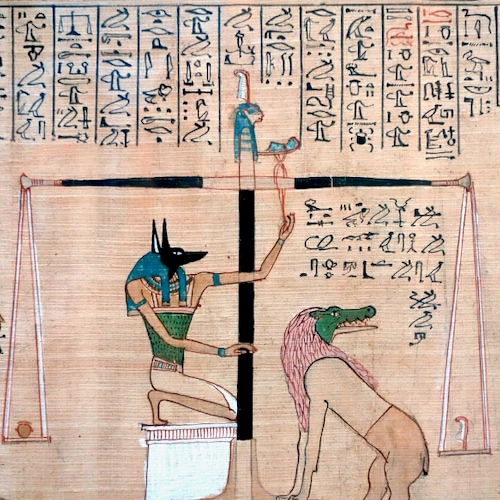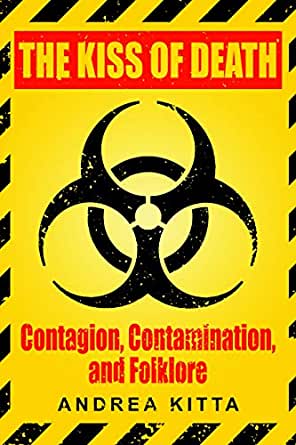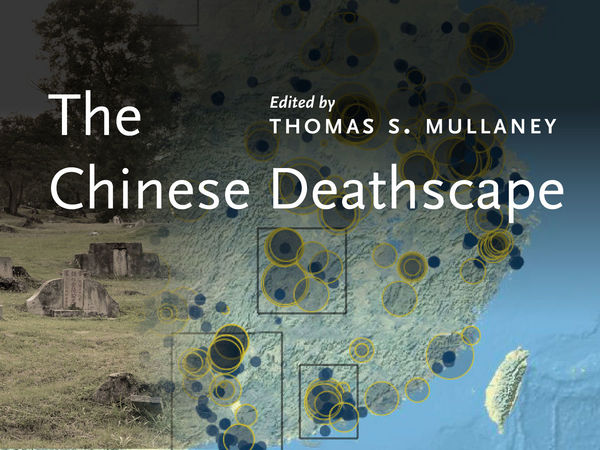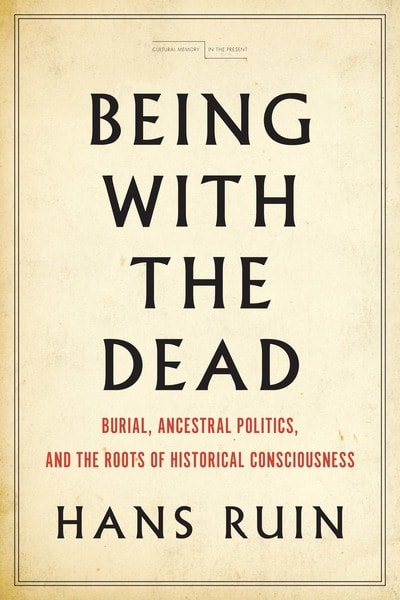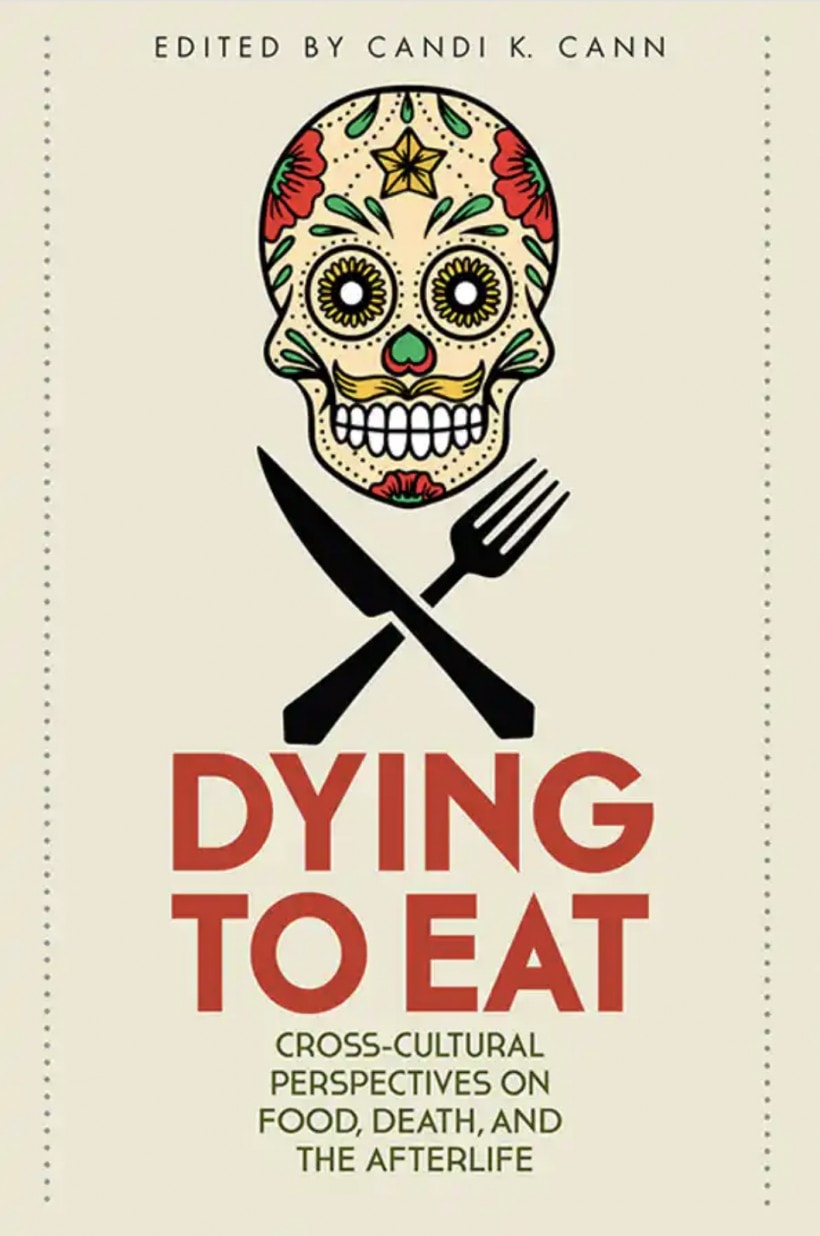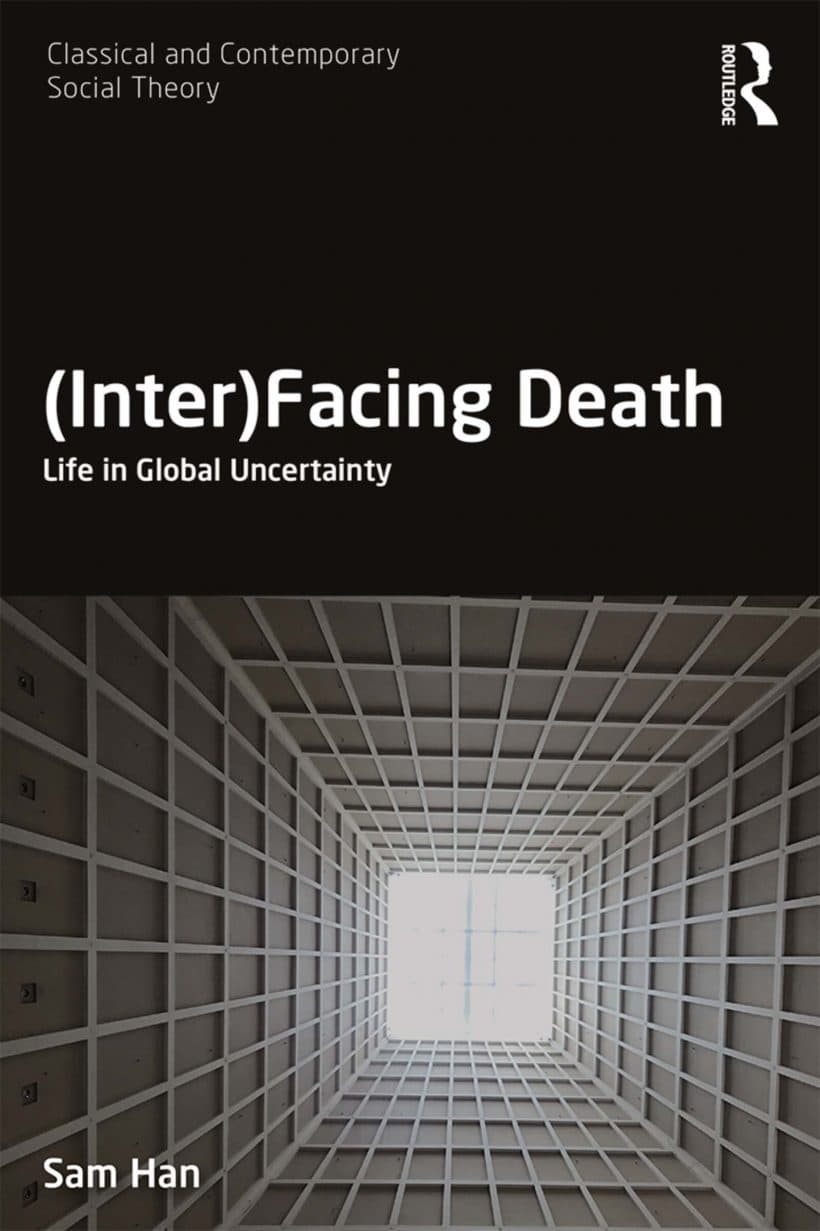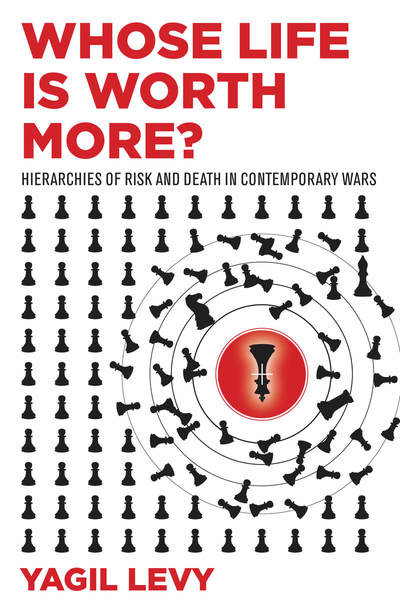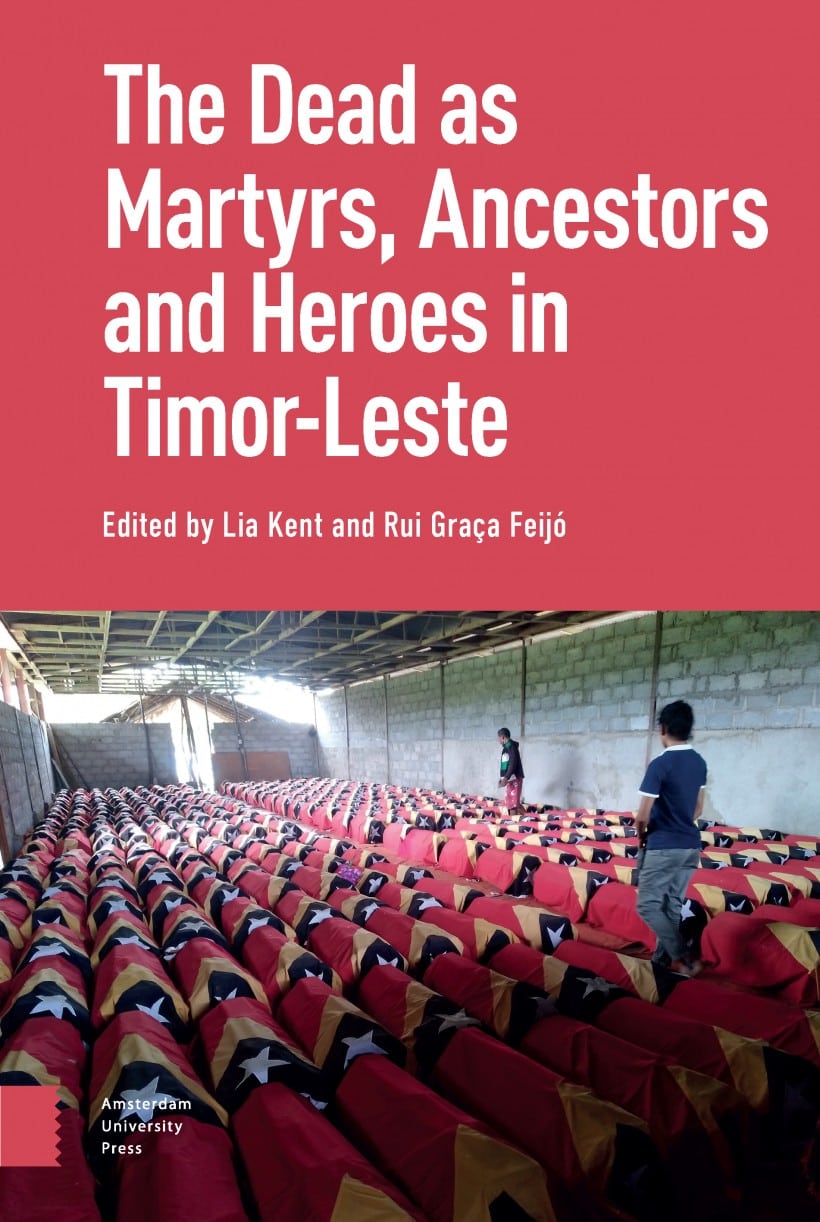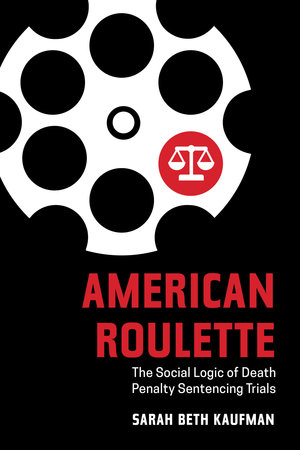The global pandemic has brought death uncomfortably close for many of us. The way our governments, economists, scientists, and fellow citizens have reacted and tried to govern over life to keep death at bay over the past few months has emphasized how, as societies and as individuals, we relate to death and life. As the months went by, we had to collectively ponder complex ethical questions: what is the price of life? Who decides what kind of life is worth living? Can one be protected from death against one’s will, and if so, whose task is it? What are we willing to give up for life?
At Allegra Lab, we thought it was time to take a step back, and make use of the anthropological lens to consider how our societies’ relationships to death and life have changed and have been shaped across times and space.
Our book selection therefore gets to grips with a host of death-related questions, often from an interdisciplinary perspective.
How does our relationship with the dead hold society together? What roles do the dead play in state-building processes in Timor-Leste? What can beliefs of zombies and vampires tell medical and scientific institutions about the best way to meet their communities’ health needs? How do ritual commemorations of fallen soldiers in the Pakistani army participate in convincing men to give their lives to the nation? How can studying cells allow us to understand the interconnectedness of life and death? How are food and death interlinked? Why and how does one end up aspiring to death? How do the dead live on and are integrated into our social lives? And so many more…
The books gathered here challenge our perspectives on these questions. If you are interested in reviewing one of them, do get in touch!
How to Proceed:
As we receive many requests for reviews, please send an email to reviews@allegralaboratory.net indicating which book you would like to review, your postal address, and 2-3 sentences explaining why you should be reviewing the book. Please explain how the book relates to your own research or interests. We will get back to you once we have selected the reviewers.
 Andrea Kitta, 2019. Kiss of Death: Contagion, Contamination, and Folklore. Utah State University Press.
Andrea Kitta, 2019. Kiss of Death: Contagion, Contamination, and Folklore. Utah State University Press.
Disease is a social issue, not just a medical issue. Using examples of specific legends and rumors, The Kiss of Death explores the beliefs and practices that permeate notions of contagion and contamination. Author Andrea Kitta offers new insight into the nature of vernacular conceptions of health and sickness and how medical and scientific institutions can use cultural literacy to better meet their communities’ needs.
Using ethnographic, media, and narrative analysis, this book explores the vernacular explanatory models used in decisions concerning contagion to better understand the real fears, risks, concerns, and doubts of the public. Kitta explores immigration and patient zero, zombies and vampires, Slender Man, HPV, and the kiss of death legend, as well as systematic racism, homophobia, and misogyny in North American culture, to examine the nature of contagion and contamination.
Conversations about health and risk cannot take place without considering positionality and intersectionality. In The Kiss of Death, Kitta isolates areas that require better communication and greater cultural sensitivity in the handling of infectious disease, public health, and other health-related disciplines and industries.
 Mullaney, T. S., Henriot, C., Snyder-Reinke, J., McClure, D. W., & Worthey, G. (2019).The Chinese Deathscape: Grave Reform in Modern China. Stanford University Press.
Mullaney, T. S., Henriot, C., Snyder-Reinke, J., McClure, D. W., & Worthey, G. (2019).The Chinese Deathscape: Grave Reform in Modern China. Stanford University Press.
(This is part of the Stanford Digital Project series.)
In the past decade alone, more than ten million corpses have been exhumed and reburied across the Chinese landscape. The campaign has transformed China’s graveyards into sites of acute personal, social, political, and economic contestation.
In this digital volume, three historians of China, Jeffrey Snyder-Reinke, Christian Henriot, and Thomas S. Mullaney, chart out the history of China’s rapidly shifting deathscape. Each essay grapples with a different dimension of grave relocation and burial reform in China over the past three centuries: from the phenomenon of “baby towers” in the Lower Yangzi region of late imperial China, to the histories of death in the city of Shanghai, and finally to the history of grave relocation during the contemporary period, examined by Mullaney, when both its scale and tempo increased dramatically. Rounding off these historical analyses, a colophon by platform developers David McClure and Glen Worthey speaks to new reading methodologies emerging from a format in which text and map move in concert to advance historical argumentation.
 Ruin, H. (2019). Being with the Dead: Burial, Ancestral Politics, and the Roots of Historical Consciousness. Stanford University Press.
Ruin, H. (2019). Being with the Dead: Burial, Ancestral Politics, and the Roots of Historical Consciousness. Stanford University Press.
Philosophy, Socrates declared, is the art of dying. This book underscores that it is also the art of learning to live and share the earth with those who have come before us. Burial, with its surrounding rituals, is the most ancient documented cultural-symbolic practice: all humans have developed techniques of caring for and communicating with the dead. The premise of Being with the Dead is that we can explore our lives with the dead as a cross-cultural existential a priori out of which the basic forms of historical consciousness emerge. Care for the dead is not just about the symbolic handling of mortal remains; it also points to a necropolitics, the social bond between the dead and living that holds societies together—a shared space or polis where the dead are maintained among the living. Moving from mortuary rituals to literary representations, from the problem of ancestrality to technologies of survival and intergenerational communication, Hans Ruin explores the epistemological, ethical, and ontological dimensions of what it means to be with the dead. His phenomenological approach to key sources in a range of fields gives us a new perspective on the human sciences as a whole.
 Rashid, M. (2020).Dying to Serve: Militarism, Affect, and the Politics of Sacrifice in the Pakistan Army. Stanford University Press.
Rashid, M. (2020).Dying to Serve: Militarism, Affect, and the Politics of Sacrifice in the Pakistan Army. Stanford University Press.
The Pakistan Army is a uniquely powerful and influential institution, with vast landholdings and resources. It has deep roots in the colonial armed forces and relies heavily on certain regions to supply its soldiers, especially parts of rural Punjab, where men have served in the army for generations. These men, their wives and mothers, and the military culture surrounding them are the focus of Maria Rashid’s Dying to Serve, which innovatively and sensitively addresses the question: how does the military thrive when so much of its work results in injury, debility, and death? Taking ritual commemorations of fallen soldiers as one critical site of study, Rashid argues that these “spectacles of mourning” are careful manipulations of affect, gendered and structured by the military to reinforce its omnipotence in the lives of its subjects. Grounding her study in the famed martial district of Chakwal, Rashid finds affect similarly deployed in recruitment and training practices, as well as management of death and compensation to families. She contends that understanding these affective technologies is crucial to challenging the appeal of the military institution globally.
 Wu, E., Park, J. E. S., Graham, J., Crocker, L. K., Fuller, G., Oualaalou, D., Shusko, C. & Ntsimane, R. (2018). Dying to Eat: Cross-cultural Perspectives on Food, Death, and the Afterlife. University Press of Kentucky.
Wu, E., Park, J. E. S., Graham, J., Crocker, L. K., Fuller, G., Oualaalou, D., Shusko, C. & Ntsimane, R. (2018). Dying to Eat: Cross-cultural Perspectives on Food, Death, and the Afterlife. University Press of Kentucky.
Food has played a major role in funerary and memorial practices since the dawn of the human race. In the ancient Roman world, for example, it was common practice to build channels from the tops of graves into the crypts themselves, and mourners would regularly pour offerings of food and drink into these conduits to nourish the dead while they waited for the afterlife. Funeral cookies wrapped with printed prayers and poems meant to comfort mourners became popular in Victorian England; while in China, Japan, and Korea, it is customary to offer food not only to the bereaved, but to the deceased, with ritual dishes prepared and served to the dead.
Dying to Eat is the first interdisciplinary book to examine the role of food in death, bereavement, and the afterlife. The contributors explore the phenomenon across cultures and religions, investigating topics including tombstone rituals in Buddhism, Catholicism, and Shamanism; the role of death in the Moroccan approach to food; and the role of funeral casseroles and church cookbooks in the Southern United States. This innovative collection not only offers food for thought regarding the theories and methods behind these practices but also provides recipes that allow the reader to connect to the argument through material experience. Illuminating how cooking and corpses both transform and construct social rituals, Dying to Eat serves as a fascinating exploration of the foodways of death and bereavement.
 Han, S. (2019). (Inter) facing Death: Life in Global Uncertainty. Routledge.
Han, S. (2019). (Inter) facing Death: Life in Global Uncertainty. Routledge.
In modern times, death is understood to have undergone a transformation not unlike religion. Whereas in the past it was out in the open, it now resides mostly in specialized spaces of sequestration—funeral homes, hospitals and other medical facilities. A mainstay in so-called traditional societies in the form of ritual practices, death was usually messy but meaningful, with the questions of what happens to the dead or where they go lying at the heart of traditional culture and religion. In modernity, however, we are said to have effectively sanitized it, embalmed it and packaged it—but it seems that death is back. In the current era marked by economic, political and social uncertainty, we see it on television, on the Internet; we see it almost everywhere. (Inter)Facing Death analyzes the nexus of death and digital culture in the contemporary moment in the context of recent developments in social, cultural and political theory. It argues that death today can be thought of as “interfaced,” that is mediated and expressed, in various aspects of contemporary life rather than put to the side or overcome, as many narratives of modernity have suggested. Employing concepts from anthropology, sociology, media studies and communications, (Inter)Facing Death examines diverse phenomena where death and digital culture meet, including art, online suicide pacts, the mourning of celebrity deaths, terrorist beheadings and selfies. Providing new lines of thinking about one of the oldest questions facing the human and social sciences, this book will appeal to scholars and students of social and political theory, anthropology, sociology and cultural and media studies with interests in death.
 Levy, Y. (2019). Whose Life is Worth More?: Hierarchies of Risk and Death in Contemporary Wars. Stanford University Press.
Levy, Y. (2019). Whose Life is Worth More?: Hierarchies of Risk and Death in Contemporary Wars. Stanford University Press.
Modern democracies face tough life-and-death choices in armed conflicts. Chief among them is how to weigh the value of soldiers’ lives against those of civilians on both sides. The first of its kind, Whose Life Is Worth More? reveals that how these decisions are made is much more nuanced than conventional wisdom suggests. When these states are entangled in prolonged conflicts, hierarchies emerge and evolve to weigh the value of human life.
Yagil Levy delves into a wealth of contemporary conflicts, including the drone war in Pakistan, the Kosovo war, the Israeli-Palestinian conflict, and the US and UK wars in Iraq and Afghanistan. Cultural narratives about the nature and necessity of war, public rhetoric about external threats facing the nation, antiwar movements, and democratic values all contribute to the perceived validity of civilian and soldier deaths. By looking beyond the military to the cultural and political factors that shape policies, this book provides tools to understand how democracies really decide whose life is worth more.
 Lia Kent, Rui Feijo (2020) The Dead as Ancestors, Martyrs, and Heroes in Timor-Leste. Amsterdam University Press.
Lia Kent, Rui Feijo (2020) The Dead as Ancestors, Martyrs, and Heroes in Timor-Leste. Amsterdam University Press.
During the 24-year Indonesian occupation of Timor-Leste, thousands of people died or were killed in circumstances that did not allow the required death rituals to be performed at the time. Since the country attained independence in 1999, families have consequently devoted significant time, effort and resources to fulfilling their obligations to the dead. These obligations are accorded particular significance due to the fact that the dead are ascribed agency and can play a benevolent or malevolent role in the lives of the living. Such grassroots initiatives run in parallel with, and reveal a range of different attitudes towards, official initiatives that seek to transform particular dead bodies into public symbols of heroism, sacrifice and nationhood. This book focuses on the dynamic interplay between the potent presence of the dead in everyday life and their symbolic usefulness in wider processes of state and nation formation.
 Cuttitta, P., & Last, T. (2019). Border deaths: Causes, dynamics and consequences of migration-related mortality. Amsterdam University Press.
Cuttitta, P., & Last, T. (2019). Border deaths: Causes, dynamics and consequences of migration-related mortality. Amsterdam University Press.
Border deaths are a result of dynamics involving diverse actors, and can be interpreted and represented in various ways. Critical voices from civil society (including academia) hold states responsible for making safe journeys impossible for large parts of the world population. Meanwhile, policy-makers argue that border deaths demonstrate the need for restrictive border policies. Statistics are widely (mis)used to support different readings of border deaths. However, the way data is collected, analysed, and disseminated remains largely unquestioned. Similarly, little is known about how bodies are treated, and about the different ways in which the dead – also including the missing and the unidentified – are mourned by familiars and strangers. New concepts and perspectives contribute to highlighting the political nature of border deaths and finding ways to move forward. The chapters of this collection, co-authored by researchers and practitioners, provide the first interdisciplinary overview of this contested field.
 Evans, N., McCarthy, A. (editors) (2020). Death in the Diaspora: British and Irish Gravestones. Edinburgh University Press.
Evans, N., McCarthy, A. (editors) (2020). Death in the Diaspora: British and Irish Gravestones. Edinburgh University Press.
(To be released in October 2020)
A pioneering comparative study of migrant death markers across the British and Irish worlds and what they can tell us about notions of ‘home’
- Sets out an innovative agenda for comparative analysis of death markers in different parts of the formal and informal British Empire
- Provides analyses based on hundreds of thousands of gravestones and memorial markers in the UK and Ireland, Australasia, Asia, Africa and the Americas
- Investigates the effects of religious identities in death and how they differ between memorials in Britain and Ireland
As British and Irish migrants sought new lives in the Caribbean, Asia, North America and Australasia, they left a trail of physical remains where settlement occurred. Between the 17th and 20th centuries, gravestones and elaborate epitaphs documented identity and attachment to their old and new worlds. This book expands upon earlier examination of cultural imperialism to reveal how individuals, kinship groups and occupational connections identified with place and space over time.
 Strong, Adrienne E. (2020).DOCUMENTING DEATH: Maternal Mortality and the Ethics of Care in Tanzania. University of California Press.
Strong, Adrienne E. (2020).DOCUMENTING DEATH: Maternal Mortality and the Ethics of Care in Tanzania. University of California Press.
(To be released in November 2020)
Documenting Death is a gripping ethnographic account of the deaths of pregnant women in a hospital in a low-resource setting in Tanzania. Through an exploration of everyday ethics and care practices on a local maternity ward, anthropologist Adrienne E. Strong untangles the reasons Tanzania has achieved so little sustainable success in reducing maternal mortality rates, despite global development support. Growing administrative pressures to document good care serve to preclude good care in practice while placing frontline healthcare workers in moral and ethical peril. Maternal health emergencies expose the precarity of hospital social relations and accountability systems, which, together, continue to lead to the deaths of pregnant women.
 Kaufman, S. B. (2020). American Roulette: The Social Logic of Death Penalty Sentencing Trials. University of California Press.
Kaufman, S. B. (2020). American Roulette: The Social Logic of Death Penalty Sentencing Trials. University of California Press.
As the death penalty clings to life in many states and dies off in others, this first-of-its-kind ethnography takes readers inside capital trials across the United States. Sarah Beth Kaufman draws on years of ethnographic and documentary research, including hundreds of hours of courtroom observation in seven states, interviews with participants, and analyses of newspaper coverage to reveal how the American justice system decides who deserves the most extreme punishment. The “super due process” accorded capital sentencing by the United States Supreme Court is the system’s best attempt at individuated sentencing. Resources not seen in most other parts of the criminal justice system, such as jurors and psychological experts, are required in capital trials, yet even these cannot create the conditions of morality or justice. Kaufman demonstrates that capital trials ultimately depend on performance and politics, resulting in the enactment of deep biases and utter capriciousness. American Roulette contends that the liberal, democratic ideals of criminal punishment cannot be enacted in the current criminal justice system, even under the most controlled circumstances.
 Bering, J. (2018). Suicidal: Why we kill ourselves. University of Chicago Press.
Bering, J. (2018). Suicidal: Why we kill ourselves. University of Chicago Press.
For much of his thirties, Jesse Bering thought he was probably going to kill himself. He was a successful psychologist and writer, with books to his name and bylines in major magazines. But none of that mattered. The impulse to take his own life remained. At times it felt all but inescapable.
Bering survived. And in addition to relief, the fading of his suicidal thoughts brought curiosity. Where had they come from? Would they return? Is the suicidal impulse found in other animals? Or is our vulnerability to suicide a uniquely human evolutionary development? In Suicidal, Bering answers all these questions and more, taking us through the science and psychology of suicide, revealing its cognitive secrets and the subtle tricks our minds play on us when we’re easy emotional prey. Scientific studies, personal stories, and remarkable cross-species comparisons come together to help readers critically analyze their own doomsday thoughts while gaining broad insight into a problem that, tragically, will most likely touch all of us at some point in our lives. But while the subject is certainly a heavy one, Bering’s touch is light. Having been through this himself, he knows that sometimes the most effective response to our darkest moments is a gentle humor, one that, while not denying the seriousness of suffering, at the same time acknowledges our complicated, flawed, and yet precious existence.
 Durand, P. (2020). The Evolutionary Origins of Life and Death. University of Chicago Press.
Durand, P. (2020). The Evolutionary Origins of Life and Death. University of Chicago Press.
(To be released soon)
The question of why an individual would actively kill itself has long been an evolutionary mystery. Pierre M. Durand’s ambitious book answers this question through close inspection of life and death in the earliest cellular life. As Durand shows us, cell death is a fascinating lens through which to examine the interconnectedness, in evolutionary terms, of life and death. It is a truism to note that one does not exist without the other, but just how does this play out in evolutionary history?
These two processes have been studied from philosophical, theoretical, experimental, and genomic angles, but no one has yet integrated the information from these various disciplines. In this work, Durand synthesizes cellular studies of life and death looking at the origin of life and the evolutionary significance of programmed cellular death. The exciting and unexpected outcome of Durand’s analysis is the realization that life and death exhibit features of coevolution. The evolution of more complex cellular life depended on the coadaptation between traits that promote life and those that promote death. In an ironic twist, it becomes clear that, in many circumstances, programmed cell death is essential for sustaining life.
 Morton, L. (2020). Calling the Spirits: A History of Seances. Reaktion Books.
Morton, L. (2020). Calling the Spirits: A History of Seances. Reaktion Books.
Calling the Spirits investigates the eerie history of our conversations with the dead, from necromancy in Homer’s Odyssey to the emergence of Spiritualism, when Victorians were entranced by mediums and the seance was born. Among our cast are the Fox sisters, teenagers surrounded by “spirit rappings; ” Daniel Dunglas Home, the “greatest medium of all time;” Houdini and Sir Arthur Conan Doyle, whose unlikely friendship was forged, then riven, by the afterlife; and Helen Duncan, the medium whose trial in 1944 for witchcraft proved more popular to the public than news about the war. The book also considers Ouija boards, modern psychics and paranormal investigations, and is illustrated with engravings, fine art (from beyond), and photographs. A hugely entertaining contribution from the supernaturally adept Lisa Morton, Calling the Spirits begs the question: is anybody there . . . ?
Allegra review guidelines:
All reviews should be completed within two months of the receipt of the book.
We use British English (i.e. use –ise and not –ize word endings). We encourage clear expression and simple sentence structures especially if English is not your first language.
Word limit: 750-1500 words.
Font: Times New Roman.
Size: 12.
Line Spacing: 1,5
No footnotes.
If you cite other authors, please reference their publication in the end.
When submitting the review, do not forget to include your name, (academic) affiliation (if any), a photograph of yourself and a short bio of 2-3 sentences.
Featured image: Photo (cropped) by Steven Zucker, found on Flickr. (CC BY-NC-SA 2.0). The Weighting of the Heart with Annubis and Ammit, from Hunefer’s Judgement in the presence of Osiris. Hunefer’s Book of the Dead (c. 1275 B.C.E., papyrus, Thebes, Egypt, now to be found at the British Museum)

